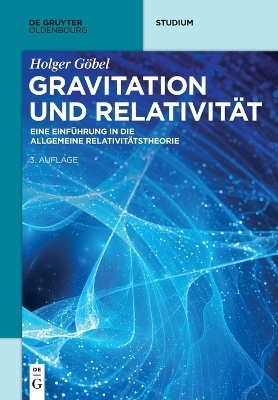
Light Filaments in Air
Wiley-VCH Verlag GmbH & Co. KGaA
978-3-527-41303-4 (ISBN)
- Titel wird leider nicht erscheinen
- Artikel merken
Jean-Claude Diels is a professor of Physics & EECE at the Department of Physics and Astronomy, University of New Mexico, USA. He has an M.S. in Physics Engineering and a Ph.D. in Physics from the University of Brussels. His research areas span experimental investigation of ultrafast phenomena; development of femtosecond laser sources; optical imaging using femtosecond range gating; nonlinear optics; coherent interactions between light and matter; picosecond and subpicosecond technology; multiphoton excitation of molecules and atoms; laser gyroscopes; study of nonlinear interfaces; multiple quantum wells; laser induced discharges; propagation of intense pulses in air, and adaptive optics. He has published several books and book chapters including "Lasers: The Power and Precision of Light" (Wiley VCH,2011, ISBN: 3527410392). Martin Richardson graduated from Imperial College, London, in Physics (1964) and gained his Ph.D in Photon Physics from London University in 1967 as the first student to graduate in lasers under the advisement of the late Daniel Bradley. Richardson joined one of the first laser groups investigating laser and plasmas in the Division of Gerhardt Herzberg at the National Research Council Laboratories in Ottawa. Mode-locking as a technique for creating ultrashort laser pulses had just been invented, and he was the first to create plasmas in gases by amplified single ultrashort laser pulses. He stayed at NRC until 1979, making contributions to the development of new lasers, including patents on the discharge-pumped CO2 laser that launched the Lumonics corporation, nonlinear optics, mid-IR laser selective dissociation of molecules, the precursor to laser isotope separation, and the development of ultra-fast optical diagnostics. His work on laser-produced plasmas lead to the creation of the first Canadian team focused on laser fusion. Collaborations with the Lebedev Institute resulted in the development of the picosecond streak camera. Ladan Arissian is Research Assistant Professor at the Department of Physics and Astronomy, University of New Mexico, USA. She obtained a PhD in Optical science and Engineering, and MSc in Nuclear Engineering (Medical Imaging) and an MSc in Theoretical Condensed Matter Physics from the University of New Mexico in 2007. Besides her interest in research, she has been involved in teaching from high school level physics to graduate courses in Optics.
Foreword/introduction by the editors
PART 1
Chap 1-5: SINGLE FILAMENT SCIENCE
Chapter 1 Introduction : Filament science and Technology
(From ionization to source development and applications)
Martin Richardson (CREOL) and Jean Claude Diels (UNM)
Chapter 2 Simple overview of self-focusing, moving foci, filament in solids and in air.
Jean-Claude Diels, UNM
Chapter 3 Modeling Filament propagation
Kolesik
Chapter 4 Model predictions of single filament parameters
Arnaud Couairon
Chapter 5 Measuring electron density in filaments
Milchberg
Chapter 6 UV filaments, experiments and theory
Alejandro Aceves, SMU, and J.-C. Diels, UNM
Chapter 7 Microscopic aspect of the fs pulse created filament
Ladan Arissian, UNM
PART 2
Chap 8-9 GENERATION OF OTHER WAVELENGTHS
Chapter 8 Conical emission from filaments, x waves, fish waves, and Supercontinuum from normal to anomalous dispersion
Daniele Faccio, Heriot Watt University, UK, and Matthieu Baudelet, CREOL UCF
Chapter 9. THz generation with
Xi-Cheng Zhang, University of Rochester and Andre Mysyrowicz
Chapter 10. Pulse shaping and filaments, filaments with angular momentum, coupling
Martin Richardson, CREOL, UCF
Chapter 11 Generation of ultra-broad continuum, and pulse compression
Jens Biegert, ICFO Barcelona
PART 3
Chapters 12-14: Multiple filaments
Chapter 12 Multiple filaments, interaction between filaments, microwave guiding
Martin Richardson, CREOL UCF
Chapter 13 Arie Beams and bullets
Stelios Tzortzakis (Crete, Greece) and D. Christodoulides (CREOL, UCF)
Chapter 14. Interaction between UV and IR filaments
Ladan Arissian, UNM, Alejandro Aceves, SMU, J.-C. Diels, UNM.
PART 4
Chap 15-18: APPLICATIONS OF FILAMENTS
Chapter 15. LIBs with filaments
M. Baudelet & M. Richardson
Chapter 16. Remote atmospheric sensing
Ludger Woeste
Chapter 17. Weather and filaments
Jean-Pierre Wolf, University of Geneve
Chapter 18 Interaction of filaments with clouds
Thomas Leisner
Chapter 19. Laser induced discharges
Jean-Claude Diels, UNM, JP Wolf, Univ. Geneve
Chapter 20 Interaction of filaments with external electric fields and applications
T. Fujii (Japan Electic Co)
Chapter 21 Plasma Interaction of filaments with solids at a distance
M. Richardson
Chapter 22 RF guiding of filaments
A. Mysyrowicz
Conclusion/future perspectives by the editors
| Sprache | englisch |
|---|---|
| Maße | 170 x 244 mm |
| Themenwelt | Naturwissenschaften ► Physik / Astronomie |
| Schlagworte | Electrical & Electronics Engineering • Elektrotechnik u. Elektronik • Filament • Laser • Materials Science • Materialwissenschaften • Optical and Non-Linear Optical Materials • Optics & Photonics • Optik u. Photonik • Optische u. Nichtlineare Optische Materialien • Photonics & Lasers • Photonik u. Laser • Physics • Physik |
| ISBN-10 | 3-527-41303-0 / 3527413030 |
| ISBN-13 | 978-3-527-41303-4 / 9783527413034 |
| Zustand | Neuware |
| Haben Sie eine Frage zum Produkt? |
aus dem Bereich


